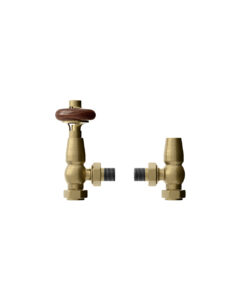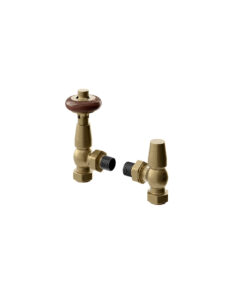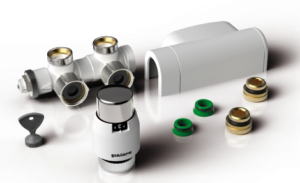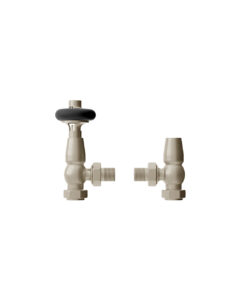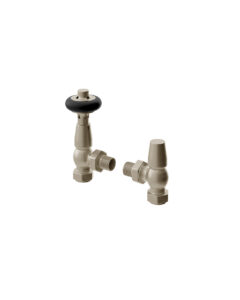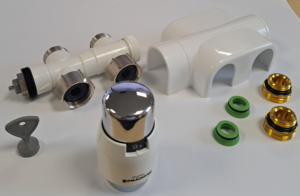If you want to know how to enhance your home’s heating without cranking up your energy bill, or you are simply curious about smarter ways to maintain comfort, you’ll want to know about TRVs.
Below, we’re going to look at TRV heads including what they are, how they fit into your heating system, and why they matter. Whether you’re considering an upgrade to your existing radiators or just want to explore energy-efficient heating solutions, understanding TRV heads is a great starting point.
We’ll explore how these small but incredibly useful devices can help you regulate your home’s temperature room by room, potentially saving you money and increasing your comfort. So, let’s get into the details of how TRV heads can make your home more comfortable and energy-efficient.
TRV Meaning – What Are Thermostatic Radiator Valves?
A TRV, or Thermostatic Radiator Valve, is designed to control the temperature of a room by adjusting the flow of hot water through a radiator. This is based on the ambient temperature.
The TRV head is the visible part that you can turn and is crucial for it to work. It contains a temperature sensor that expands or contracts with changes in room temperature, which regulates the valve without any manual input.
So, how exactly does this work?
Quite simply, inside the head of a TRV is a bellows or a wax capsule that reacts to temperature changes. As the room cools, the substance inside contracts, gradually opening the valve to let more hot water flow through the radiator, increasing the room’s temperature.
Equally, as the room reaches the desired temperature, the substance expands, closing the valve to reduce the heat output. This automated adjustment helps maintain a consistent room temperature, enhancing comfort and energy efficiency, without any further input compared to manual valves on traditional radiators.
The TRV head is typically marked with numbers or settings that allow homeowners to set their preferred temperature for each room by twisting this. This feature is particularly beneficial in houses where room usage varies significantly. For instance, you might prefer a cooler temperature in a rarely used guest room while keeping living spaces cosy and warm.
TRVs are known for their simplicity and effectiveness, helping you create zonal heating within your home that helps reduce energy consumption and heating costs. This is because they help you avoid overheating rooms that are not in use.
What Is The Function Of A Thermostatic Valve?
A TRV is more than just a temperature regulator. When used effectively, it can effortlessly enhance both the comfort and the efficiency of your home heating all year round. The primary function of a thermostatic valve is to maintain the desired temperature of a room, automatically adjusting the heat output of the radiators based on real-time temperature readings.
The mechanism of a TRV is elegantly simple yet highly effective. As the temperature in the room changes, the sensor reacts to this:
- When the room is too cold – the fluid or wax contracts, causing the valve to open and allow more hot water to flow through the radiator, helping to increase the room’s temperature.
- When the room reaches the set temperature – the substance expands, pushing the valve to close and reducing the flow of hot water, which decreases the heat output.
This self-regulating feature is what makes TRVs so valuable in managing home heating efficiently. Since the valve adjusts automatically, it minimises the energy waste associated with overheating a room, such as a spare room or hallway. You can set different temperatures for each room based on individual comfort and usage, which is not only convenient but also cost-effective.
Dual Components: Body and Head
The TRV consists of two main parts: the body and the head. The body is connected directly to the radiator itself, controlling the actual flow of hot water, while the TRV head is equipped with a temperature-sensitive mechanism. Together, they ensure that each room in your home maintains your preferred comfort level.
If you don’t already have TRVs on your radiators, you’re missing out on gaining precise control over your heating.
How Much is a TRV Head?
The good news is the cost of a TRV head is reasonable for the function it serves. They are an inexpensive investment to help you reduce energy use, and in effect, your energy bills. You’ll need to purchase the whole TRV rather than just the head, and there are different types available to help you match the aesthetic of your existing Stelrad radiators.
For example, our TRV and Lock Shield Valve set starts from £31.50 whether you need straight or angled valves and comes in either traffic white or chrome to match. We also have brushed nickel and antique brass TRVs that are suitable for more traditional-style radiators like our column radiators.
If you’re thinking about purchasing TRVs, it’s important to weigh the initial investment against the potential energy savings and increased comfort. It may cost more upfront but can save money in the long term by optimising your home’s heating system.
Be sure to browse our website for a range of options that are suited for different budgets and styles of radiators.
Is Getting a New TRV Head Worth It?
Deciding whether to invest in a new TRV head will depend on your situation. If you already have TRVs on your radiators but they are not in the best condition or are non-responsive, upgrading can provide more accurate temperature control and efficiency, leading to lower heating costs and enhanced comfort. Newer TRV models will have improved sensitivity and can handle temperature adjustments more effectively, ensuring rooms are heated precisely to your liking.
However, if your existing TRV is still functional and your home’s heating requirements haven’t changed significantly, the need for an upgrade might not be as urgent. Unless they are failing or outdated, you may not see the benefits of replacing them at this time.
Contact Us Today
If energy savings, precise temperature control, and long-term cost efficiency are priorities for your home, TRVs are definitely worth considering.
Have any questions or need advice on TRVs? We’re here to help, so reach out to us through our website today. Our team can assist in finding the perfect solutions for your home heating and recommend whether new TRVs or new radiators can help you have a warmer, cosier home.
For more from our blog, you can read all about the latest kitchen radiator ideas, as well as how to maintain warmth in multi-storey homes.


